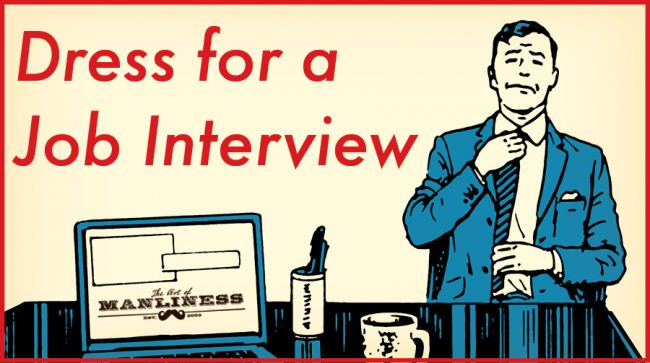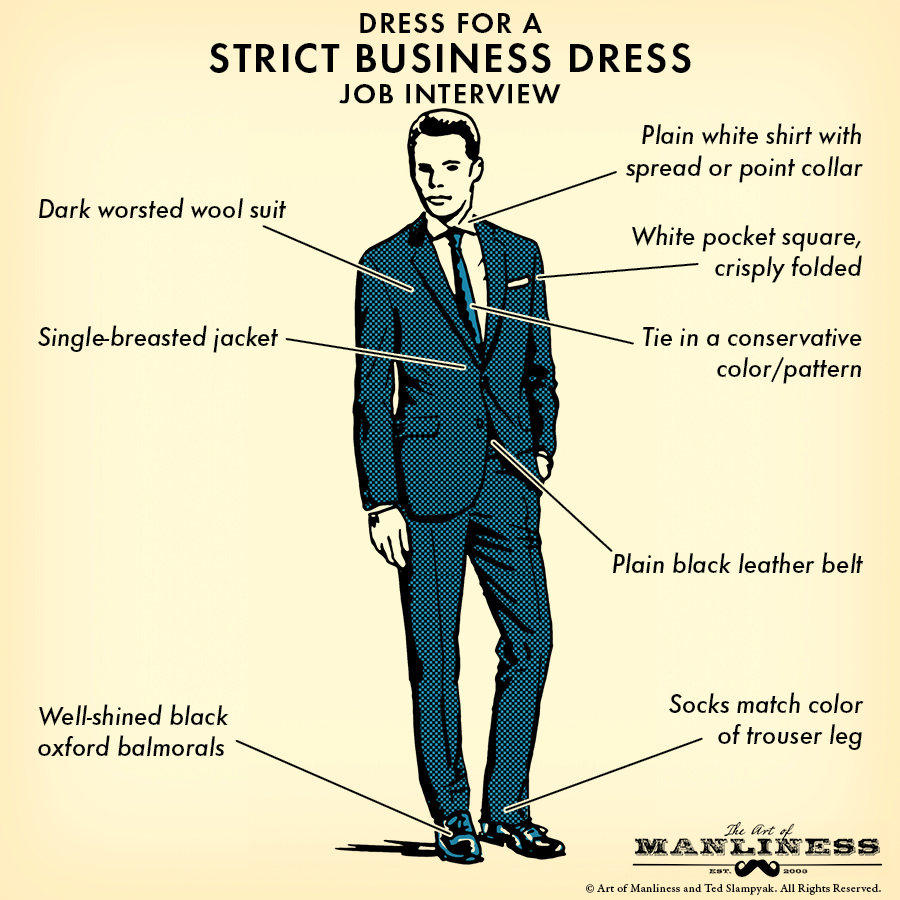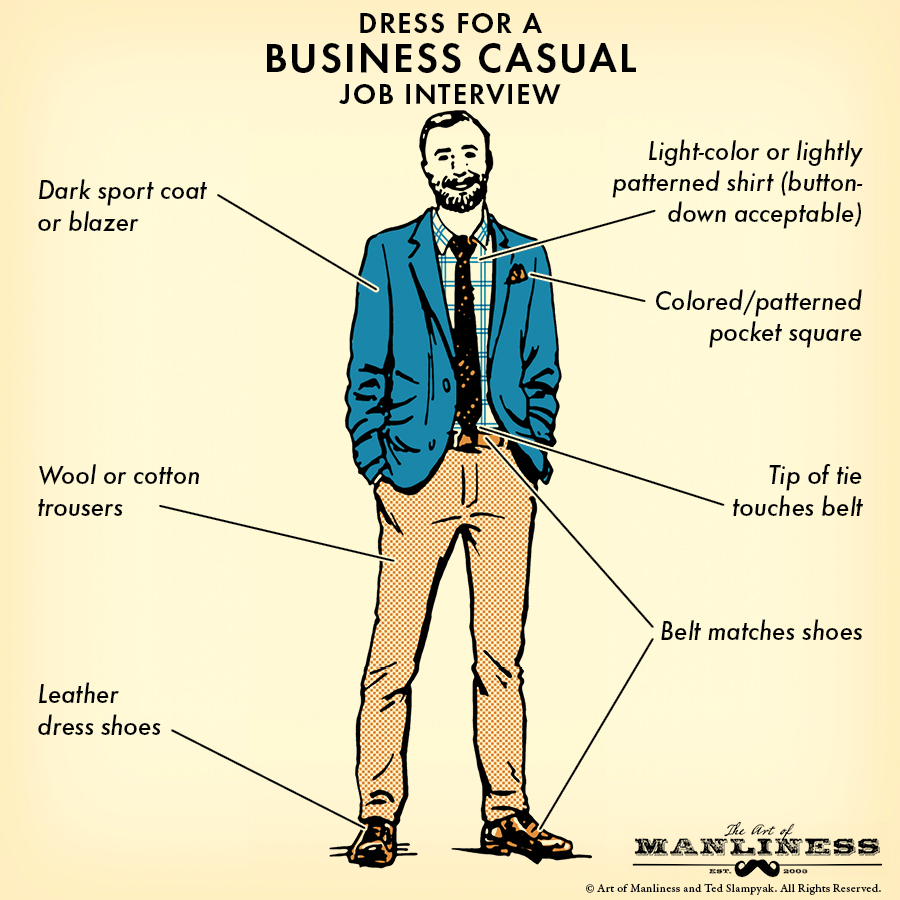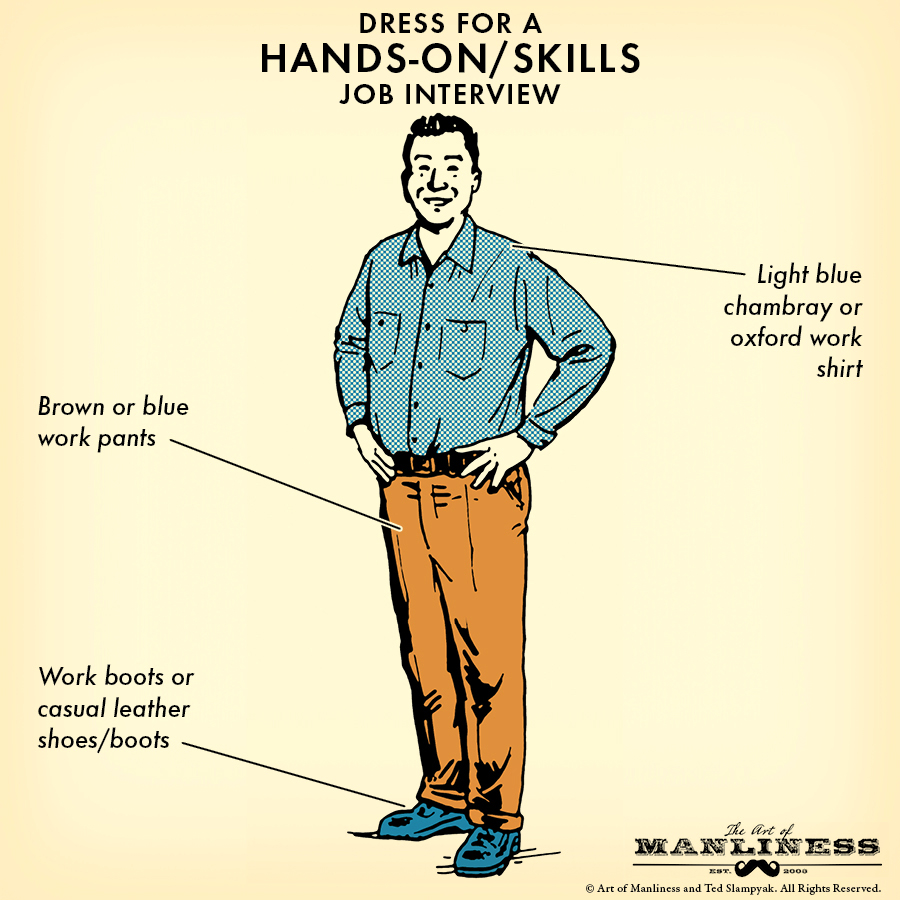
Yesterday, we laid out the reasons why what you wear to a job interview is very important. We also debunked a common myth: a formal business suit is not always the right outfit for an interview. It often is, and if you really have nothing else to go on it’s probably your safest default, but be aware that overdressing can cost you a job just as easily as underdressing. A guy who shows up to interview for an hourly wage job at a garage in a suit and tie doesn’t look like someone who understands the culture of that workplace or who’s going to stick around for long — he’s clearly got his mind on bigger and better positions.
Below we walk you through not only the overarching rule to keep in mind when deciding what to wear for a job interview, but also the five categories of dress codes to know, the specific clothes to wear for each code, and even grooming tips to take you up a notch.
The “One Step Higher” Rule
Your best rule for interview clothing is this: dress one significant level of formality higher than you would for a day on the job.
In shorthand, that’s the “One Step Higher” rule. It means that if on a normal day you’d be wearing khakis and a dress shirt but no tie, you should show up at the interview in slacks, a blazer, and a shirt with a tie, but not a suit. If you’d be wearing jeans and a polo at the job, wear khakis and a tie but no jacket. And so on.
All well and good, you say, but at an interview you haven’t yet worked a day at the company. You probably haven’t seen the employee handbook, HR manual, dress code, or wherever else they lay out clothing standards, either. So how do you know what the base level of formality is, and therefore how to dress one step higher than it?
A smart interviewee will take the time to figure out a company’s dress standards before going to the interview. Depending on your connections, you can do this in one of three ways:
Inside Information: Ask someone who works there. Obviously, not everyone has this option, though in some cases the offer of an interview comes with instructions along the lines of “no need to wear a suit” or “dress professionally.” It’s also possible in some cases to e-mail the supervisor you’d be working for and say “I’m thrilled I got the interview — what would you recommend I wear?” or words to that effect. Internal recommendations of any kind are the best cues you’re going to get, so if you’ve got a source, use it.
Make a Visit: If you don’t have a source on the inside, and you don’t want to ask, take a trip to the office and see for yourself. If you get there at the start or end of the workday you should be able to see plenty of people coming or going in their daily uniforms. In most cases you can get into the lobby as well, though you may need to introduce yourself to the receptionist.
Online Snooping: Some companies have an active presence on the web, and you’ll be able to do some sleuthing to determine what folks who work there are generally wearing. Either on a website, or some social media account, you may be able to find a behind-the-scenes or work party pic. Use those as a rough guide for the general office dress code.
Educated Guessing: In the case of a distant company where you don’t know anyone, you don’t have a lot of good options. The best you can do is determine the general standards of your industry and err on the side of the highest standards. In each of the following sections we talk about how to dress to each standard, but we’ll also start with a list of industries where that particular standard is common. It’s not 100% foolproof, but you can usually make assumptions along the lines of “wear a suit to interview for a job at a bank,” or “don’t wear a tie to interview for a hands-on job at a ranch.”
However you figure out what an employee in the position you’re applying for would normally wear to work, remember the One Step Higher rule: dress one significant level of formality higher than you would for a day on the job.
Levels of Formality: The Five Categories for Interviews
To break it down in a little more detail, here are the broad categories of formality that you should be using as your categories or “steps” of formality:
- Strict Business Dress
- Business Dress
- Business Casual
- Casual
- Work Clothes
Let’s look at each in more detail.
The Strict Business Dress Interview

Business dress is a category with some flexibility to it, which is why we’ve set “strict business dress” aside as its own category apart from just “business dress.” This is where you not only need to be dressing like a businessman, but like a businessman making the most formal and conservative choices.
When You Should Interview in Strict Business Dress
If you’re interviewing for a job that requires you to wear a business suit every day, the only way to dress more formally for the interview is to wear a business suit really well, with perfectly executed details. Typically you dress this sharply when you’re applying in industries that already have high standards of presentation:
- Prominent law firms
- Most banking and financial positions
- Executive roles
- High-level political positions
The common thread here is jobs for powerful people. If everyone you’ll be working with wears suits already, your suit needs to impress…



more…
https://www.artofmanliness.com/2018/01/18/how-to-dress-for-job-interview/



